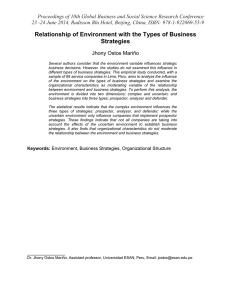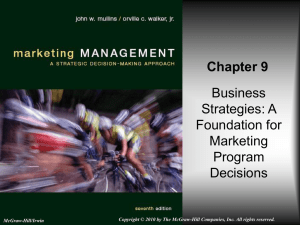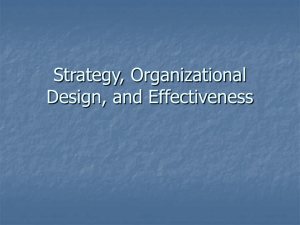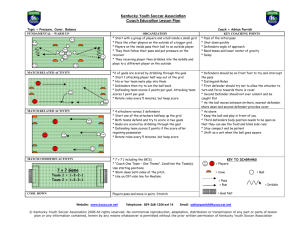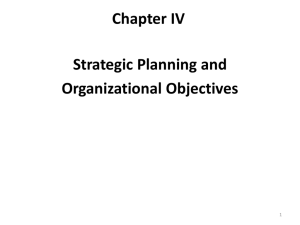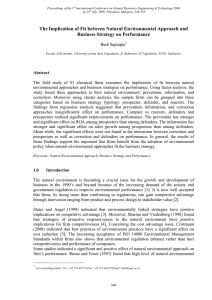Process Management Practices
advertisement
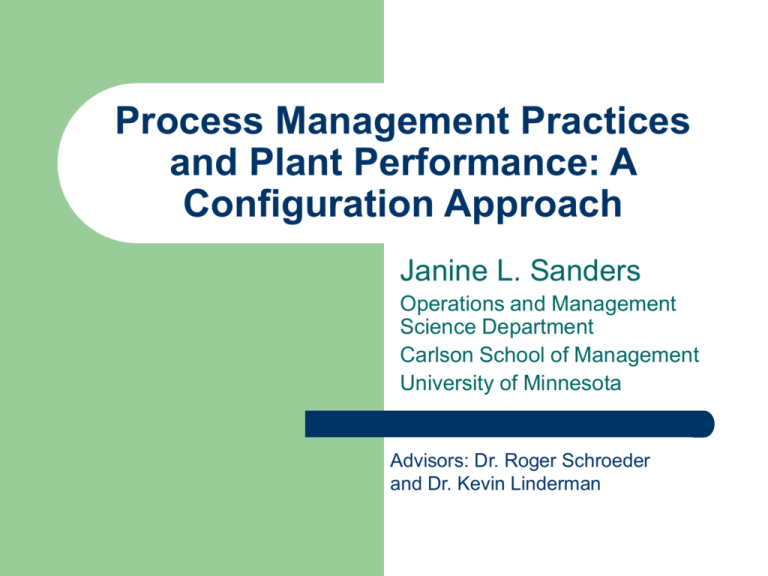
Process Management Practices and Plant Performance: A Configuration Approach Janine L. Sanders Operations and Management Science Department Carlson School of Management University of Minnesota Advisors: Dr. Roger Schroeder and Dr. Kevin Linderman Motivation Practical Increased emphasis on process management in organizations Several drivers for adoption i.e., Customer requirement, Strategic, Imitation Some organizations will fail for a variety of reasons – – Mismatch with strategy, structure, culture Lack of top management support Motivation Research Institutional forces strong influence on other manufacturing practices Process management practices impact on performance inconsistent – – Limited studies specifically on process management practices Numerous definitions and measures Research Questions How do institutional forces affect the degree of use of process management practices? When is process management practices beneficial to an organization? Are there specific configurations of external and internal organization components that align with process management practices to yield better plant performance? Literature Review Process Management as an element of TQM (Flynn et al.,1995; Anderson et al.,1995; Powell, 1995; Choi and Eboch, 1998; Rungtusanatham et al., 1998, 2005; Samson and Terziovski, 1999) Process Management Practices (Ahire and Dreyfus, 2000; Ittner and Larcker, 1997) Process Management and Strategy (Benner and Tushman, 2002, 2003; Sousa and Voss, 2001) Definition and Context Process Management Practices – – The tools and techniques used to manage processes that create customer value, organizational value, and/or support key business operations Three types of practices: map, improve, and control Context: Shop-floor level manufacturing processes Institutional affect Institutional theory Types of forces – – – – – Industry Country Competitive Intensity Customer driven Government regulations P1: Institutional forces, such as industry, country, competition, customer demands, and regulatory requirements, will influence the use of process management practices. Configuration Approach Configuration Theory (Miller, 1987; Meyer et al., 1993; Doty et al., 1993; Dess et al., 1993; Drazin and Van de Ven, 1985) Elements for Configuration (Miles and Snow, 1978) – – – – Environment Strategy Structure Process Management Practices Configuration Model Ideal Organization Types Prospector Defender Analyzer Alignment (Ideal organization type fit with process management practices) Degree of use of Process Management Practices Plant Competitive Performance Table 2: Organizational Types Configurations Dimension Prospector Defender Analyzer Uncertainty H L M Complexity H L M Hierarchical levels L H M Centralization of Authority L H M Formalization L H M Functional Interdependence M L H ENVIRONMENT STRUCTURE STRATEGY Narrow market, Cost leader Broad markets, First mover Mixed market, Follower Quality Values and principles M H H Process Management Practices L H M H=high, M=medium, L=low Configuration Propositions P2: There is a difference in the level of use of process management practices between Prospectors, Defenders, and Analyzers. Defenders use process management practices the most, while Prospectors use them the least. P3: The alignment between organization type and use of process management practices is positively associated with plant performance. P4: There is no difference in plant performance when there is a high degree of alignment between organization type and process management practices. Research Methodology Sample – – – Measures Classification Methods – – – N=189 Automotive, electronics, and machinery industries Japan, Sweden, Finland, Korea, Germany, USA Interval scaling Calibration sample Expert panel SEM and Multivariate Techniques Conclusion Potential Contributions – – Potential Limitations – – – Identify important institutional factors Further understand impact of context Missing measures for some variables Configuration Development Classification Method Future Research – – Other manufacturing practices Service organizations and transactional processes Thank you!
